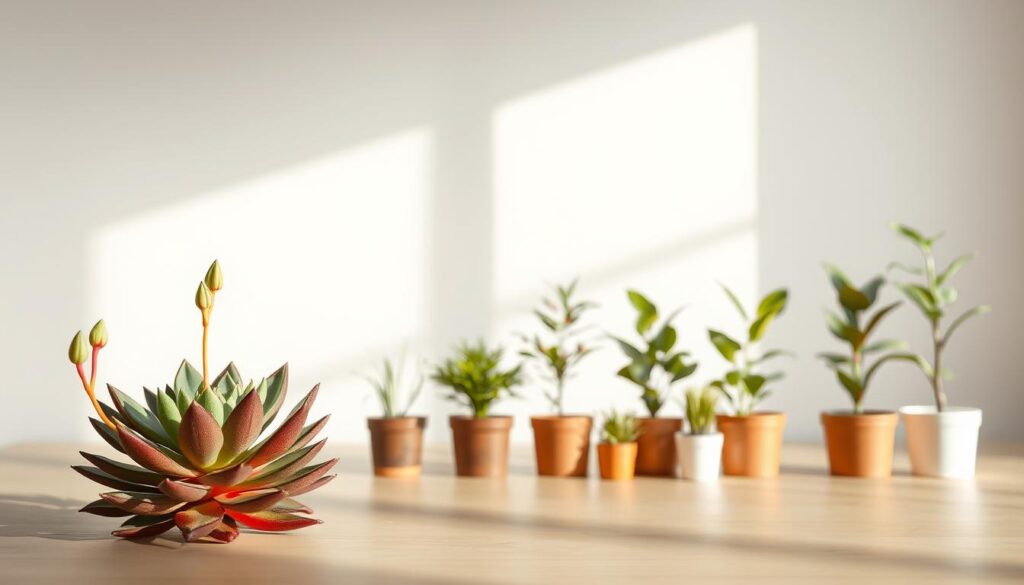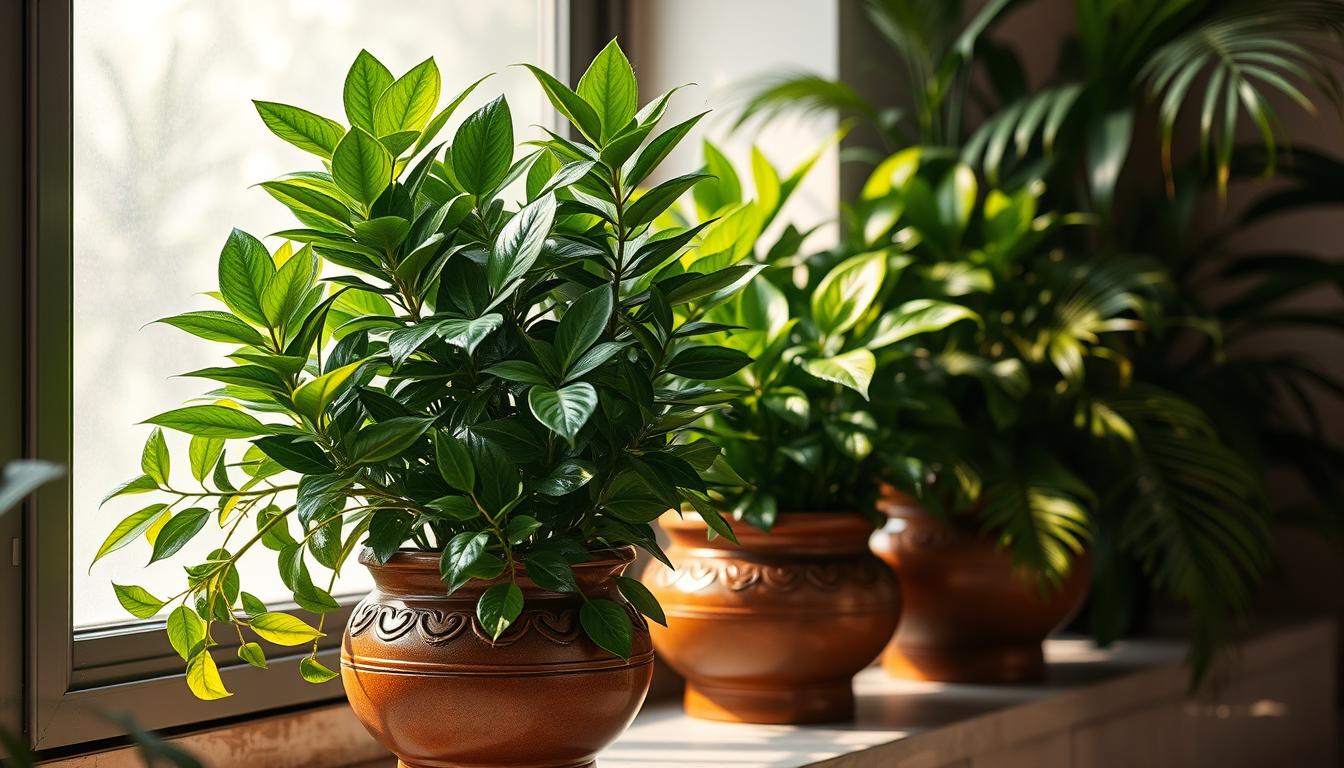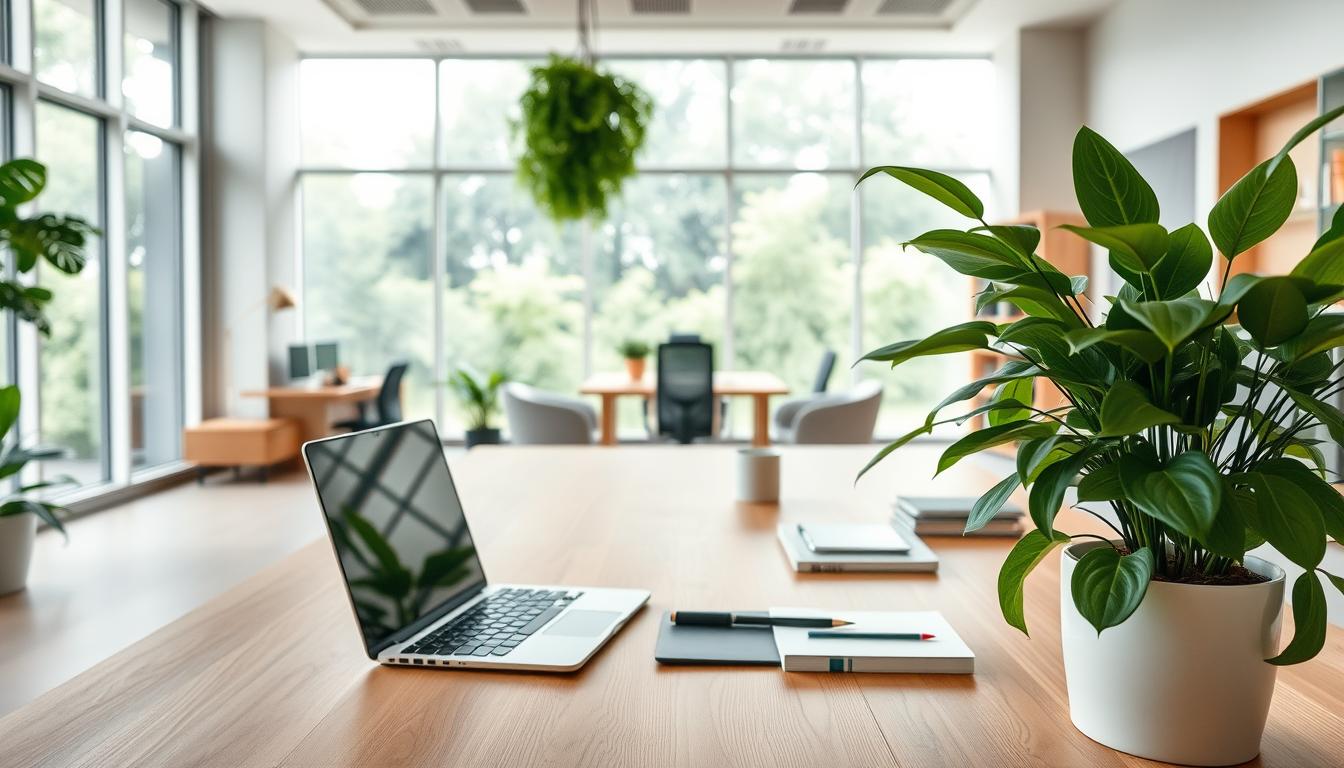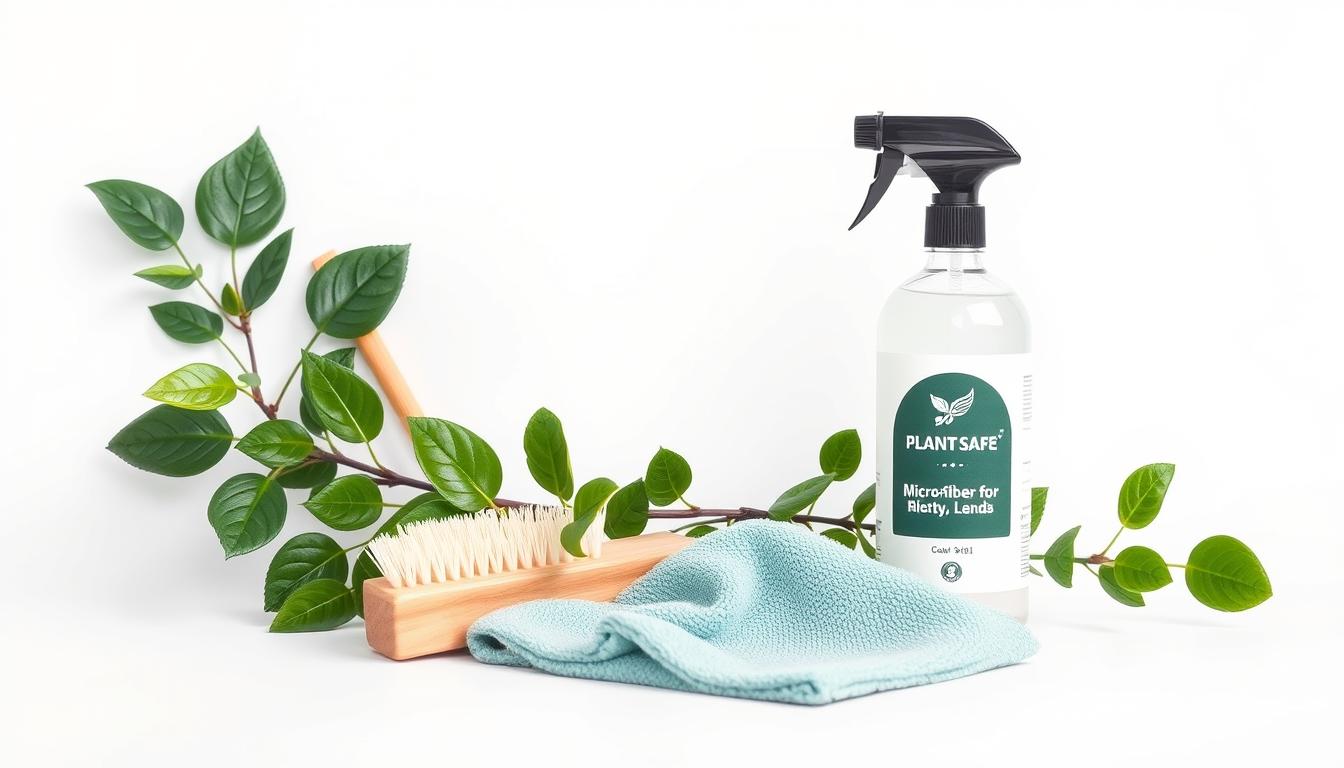Today, caring for the environment is more important than ever. That’s why artificial plants have become a favorite for decorating homes. They are easy to keep looking good, even in places where real plants can’t grow. Knowing the best ways to care for fake plants can help them last longer.
By using earth-friendly care methods, you can keep these plants looking great for many years. This makes artificial plants a great addition to any space.
Understanding the Lifespan of Artificial Plants
Thinking about getting artificial plants for your space? They are great for anyone wanting ease. The life of these faux greens depends on a few things. Good quality materials are key for them to last a long time.
The Impact of Quality and Materials
Top-notch artificial plants can last from 2 to 5 years outside. Materials treated for UV rays, like polyethylene, last longer. But, cheap plastic might break down or lose color faster. So, spending on quality means your plants won’t fade or get damaged easily.
Factors Influencing Longevity
Many outside factors can change how long your fake plants last. Important things to watch out for include:
- Sun exposure: Sunlight can make colors fade, so UV protection is important.
- Weather conditions: Outdoor plants need to be strong to stand up to rain and wind.
- Design purpose: Plants made for indoors often can’t handle being outside.
Knowing what affects their life can help you pick artificial plants that stay looking good for years.

Importance of UV Protection for Outdoor Plants
UV protection is very important for keeping outdoor artificial plants looking bright and colorful. These plants are easy to take care of and make outdoor spaces look better. But, they can get damaged by the sun’s rays. If they’re in the sun too much, they start to fade and don’t look as good. Choosing materials that resist UV can make these fake plants last a lot longer.
How Sunlight Affects Artificial Plants
The color of outdoor artificial plants can change a lot because of sunlight. A lot of artificial plants aren’t made to protect against UV rays. So, they can fade quickly. The sun’s strength changes during the day and with the seasons. This makes the fading even worse. Knowing this can help you pick and place your plants smarter.
Choosing UV-Resistant Options
It’s important to pick outdoor artificial plants made with UV-resistant materials. Many good brands make these kinds of products for outside use. They add special features to protect against UV rays. Making this choice helps keep your plants safe from the sun. It also makes them last much longer. Always check for UV resistance on the label to make sure your decorations stay beautiful.
Sustainable Care Strategies for Long-Lasting Artificial Plants
Taking good care of artificial plants is key to keeping them looking fresh and lively. If you clean them the right way and look after them seasonally, they’ll last longer and stay pretty. It’s important to change how you take care of them based on the weather to ensure they always look their best.
Cleaning Techniques to Preserve Appearance
Cleaning often is important to stop dust from building up and colors from fading. To get the best results, you should:
- Use a soft brush or cloth to gently remove dust from leaves.
- Specialized sprays can help repel dust and maintain shine.
- A mild soap solution works well for deeper cleans, ensuring no harsh chemicals are used.
Seasonal Maintenance Tips
It’s important to adjust how often you clean your plants with the changing seasons. For plants outside, check them more in dry months. Here are some tips:
- Adjust the cleaning routine based on seasonal weather changes.
- Check for mold or mildew, especially in humid conditions.
- Store indoor faux plants during extreme weather to prevent damage.
Optimal Placement: Shielding Your Faux Foliage
Finding the perfect spot for fake plants helps them last longer and look better. Putting them in the right place keeps them safe from environmental harm. It’s important to pick the best places inside and outside to keep your artificial plants in great shape.
Identifying Ideal Locations Indoors and Outdoors
To decide where to put your plants, look at light, temperature, and moisture levels. Here’s how to choose wisely:
- Position indoor plants away from direct sunlight to prevent fading.
- Select areas with stable temperatures, avoiding extreme heat or cold.
- In outdoor spaces, place artificial plants where they benefit from natural shade, reducing sun exposure.
- Use planters that provide protection from strong winds when decorating balconies or patios.
Utilizing Natural Shade
Using natural shade helps outdoor fake plants last longer. Follow these suggestions to improve your artificial plants’ lifespan:
- Place plants under trees or awnings for immediate sun protection.
- Strategically arrange plants near natural barriers, such as fences, to create a micro-climate that reduces harsh weather effects.
- Evaluate the pathways of sunlight throughout the day to ensure optimal placement during all seasons.
Choosing the Right Artificial Plant for Your Environment
When picking out fake plants, it’s key to know the difference between ones for inside and outside. Each type is made for certain settings, which affects how they look and how long they last. Choose the right kind, and it’ll look great and last longer.
Understanding Indoor vs. Outdoor Variants
Indoor and outdoor fake plants have different jobs. Indoor plants are usually softer and look like real plants but can’t handle bad weather. Outdoor plants are made of tough stuff that can face sunlight and rain without fading. Picking indoor or outdoor plants changes how well your decor works.
Investing in High-Quality Products
Getting top-notch fake plants is worth it for their durability and real look. The best ones go through tough tests and are made with great materials. This makes them look real and able to stand up to weather changes. Choosing quality means your fake plants will keep looking fresh, inside or outside.
Importance of Regular Cleaning
Keeping artificial plants clean is very important. It helps them look good and last longer. Dust and grime can make them look dull over time. Cleaning them the right way keeps them bright and welcoming.
Effective Cleaning Methods for Different Materials
Different artificial plants need different care. Here’s what to do:
- Silk plants should be gently wiped with a damp cloth. This gets rid of dust without hurting the fabric.
- Plastic ones can be washed off with water from a hose. This cleans out all the dirt.
- For plants made of mixed materials, a blend of both methods works best.
Using Specialized Cleaners
Using special cleaners made for artificial plants is key. These cleaners are safe and won’t damage the plants, unlike regular household cleaners. Using these cleaners often keeps the plants looking their best.
Utilizing UV Spray for Extra Protection
Adding a UV spray helps artificial plants last longer by shielding them from harmful sunlight. This step is key to keep the colors bright and the structure strong. Using the right techniques is important to cover the plant completely.
How to Apply UV-Resistant Sprays
Pick a spot with good air flow to start. Before using, shake the UV spray can well. This makes sure the mix is even.
Hold the can 6 to 12 inches from the plant and spray evenly. Move the can side-to-side to coat every part. Focus on areas that get a lot of sun since they fade faster.
Frequency of Application and Best Practices
You should use UV spray on your artificial plants at least once every season. If you live in a very sunny place, you might need to apply it more often, maybe every few months. Check your plants regularly to see if they need more spray, especially if they are in the sun a lot.
Reviving Faded Plants: Restoration Techniques
Artificial plants may lose their color from sunlight and the environment over time. You can often refresh these plants with different restoration methods. It’s key to know when it’s time to get new plants. Rotating your plants is a good way to keep their look fresh.
When to Consider Replacement
Sometimes, plants fade so much that simple fixes don’t work. If cleaning or using UV spray doesn’t help your artificial plants, it may be time to get new ones. Choosing new, quality plants can really make your space look better.
Rotating Plants to Maintain Uniform Color
Rotating your plants ensures they all get the same amount of sunlight. This helps keep their color even. Moving plants around regularly prevents some from fading faster than others. Doing this helps keep your plants looking great for a longer time.
Caring for Artificial Plants in Different Weather Conditions
Artificial plants need care that changes with the seasons. This care helps them look good and last longer all year. They can stay in great shape, no matter the weather.
Adapting Care Strategies for Seasonal Changes
Weather changes mean you must care for artificial plants differently. In spring and summer, they might get dirty from more humidity and rain. Make sure to clean them well to stop dirt from building up.
In the fall, watch out for leaves and debris sticking to your plants. Keeping them clean during these times will make them last longer.
Winter Storage Recommendations
Storing artificial plants in winter is important to keep them safe. Move them inside to avoid damage from the cold and snow. If you can’t bring them indoors, find a spot outside that’s covered.
Wrapping them in breathable materials is also a good idea in winter. This helps keep them in top condition.
Conclusion
To keep your artificial plants looking great, you need a plan. This plan includes caring for them in a way that keeps them looking fresh. Following the tips we talked about will make your artificial plants last longer, making any room look better.
Spending a bit of extra time cleaning your plants and choosing quality ones is smart. This not only makes your space look good but also means you don’t have to buy new plants often. You’ll save money and support a greener lifestyle at the same time.
Using these care tips will help you make the most out of your artificial plants. They’ll add a lasting splash of green to your home or office. And by sticking to these eco-friendly practices, your decor won’t just look good—it’ll also do good for the planet.



